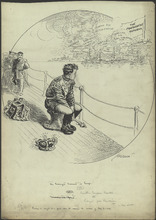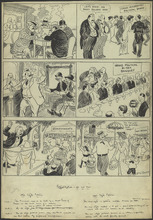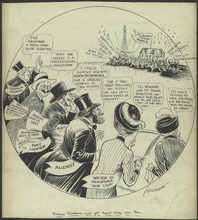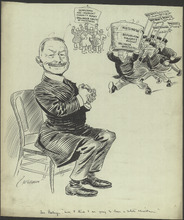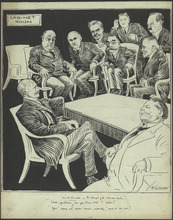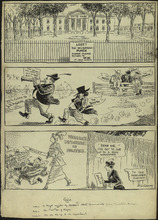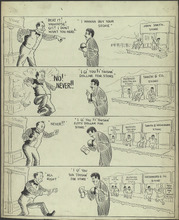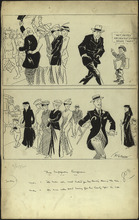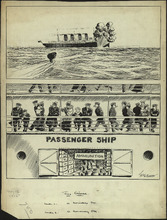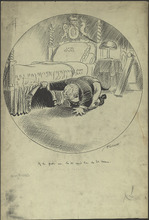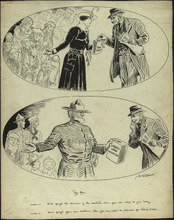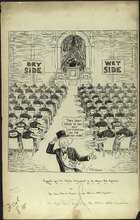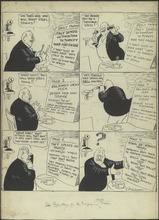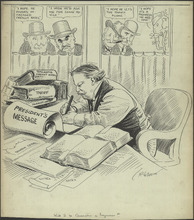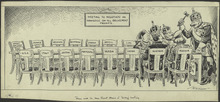JM-133: Portugal goes Republican
This cartoon depicts King Manuel II fleeing Portugal after the Republican Revolution, which occurred in 1910. Before the revolution, Portugal had a constitutional monarchy, modeled in a similar fashion to that of Great Britain. In the decades before the revolution, the monarchy faced adversity by lower factions of society. The monarchy ruled Portugal in combination with aristocratic oligarchies, which maintained a relatively stable political status quo. Eventually, these oligarchies failed to maintain power, and the political situation in Portugal became increasingly unstable. Hatred for the monarchy grew to the point when King Carlos and his first son where jointly assassinated in 1908. Manuel II began to rule Portugal in his father's place, but failed to quell the urge to rebel among his people. On October 5, 1910, the violent revolution began in Lisbon, leaving hundreds dead in the struggle. Manuel II and his family fled, hoping to receive news that loyalist forces managed to overcome the revolutionaries. After realizing the revolutionaries had succeeded, Manuel II fled to England. The English government sympathized with the Portuguese monarchy. The new republican government maintained power and Portugal never returned to a constitutional monarchy structure. (Summary created by Mary Delano, MU History Intern, Spring 2018)
